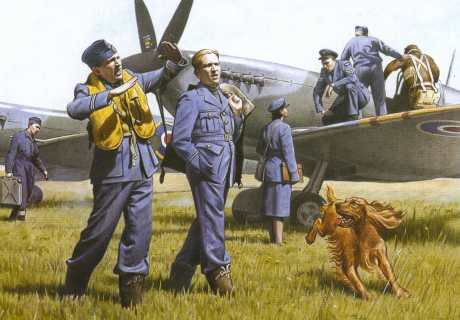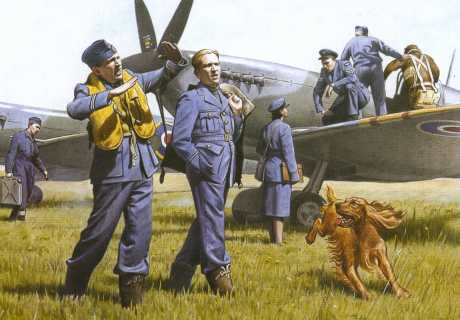ICM 48081 WWII RAF Pilots and Ground Personnel 39-45
ICM 48081 WWII RAF Pilots and Ground Personnel 39-45 will be backordered from our supplier. Delivery will take between 3-5 working days & orders will be despatched once completed.
Description
Description
The RAF (full English name: Royal Air Force) is the British Air Force that began to bear this name in April 1918. Previously, it was known as the Royal Flying Corps. From April 1918, they also became an independent air force, not under the command of the army or navy. It is worth adding that at the end of the Great War, the RAF had approx. 4,000 people. pilots and as many as approx. 115 thousand. ground staff people. In the interwar period, its number decreased significantly, and their participation in even local armed conflicts was relatively small. However, in the face of the coming war in 1936, the RAF was reorganized, separating three commands within it: Coastal Defense (ang. Coastal Command) , hunting Fighter Command ) and Bomber Command. The construction of a radar network called Chain Home was also developed, which provided invaluable services during the Battle of Britain in 1940. During the course of World War II, the RAF's personnel grew steadily, reaching its peak in 1944, more than 1.1 million! Of course, a large part of them were conscripts with appropriate training. The organizational structure of the RAF also changed - an example is the division Fighter Command at the end of 1943 on Air Defense Great Britain (forces dedicated to the defense of the British Isles) and 2 Tactical Air Force (forces dedicated to supporting land forces).
The RAF (full English name: Royal Air Force) is the British Air Force that began to bear this name in April 1918. Previously, it was known as the Royal Flying Corps. From April 1918, they also became an independent air force, not under the command of the army or navy. For a large part of the interwar period, the RAF did not take part in any major military conflict, mainly dealing with communication and transport tasks. However, in the face of the growing threat from Nazi Germany, in 1936 the RAF was reorganized, separating three commands within it: coastal defense, fighter and bombing. From the mid-1930s, the process of implementing new types of aircraft began, such as the Hawker Hurricane (prototype flight in 1935) or Supermarine Spitfire (prototype flight in 1936). The process of building a radar network in England and Scotland, which was later called Chain Home, was started and continued with considerable success. RAF squadrons took part in combat operations from the beginning of World War II, and the greatest success of the British Air Force is the victory in the Battle of Britain (1940), achieved despite the numerical superiority on the German side, and with the support of pilots from many countries - in the ones from Poland. It is worth adding that in the course of these struggles the hunting tactics were subjected to a profound reform. The RAF also made great contributions to the air defense of Malta against the Italian and German air forces. He also participated in virtually every major British land offensive from 1942 to 1945. Independently, and later together with American bombers, it carried out strategic bombing of Germany. There is no doubt that the RAF during World War II proved to be one of the most powerful air force in the course of this conflict.
Payment & Security
Payment methods
Your payment information is processed securely. We do not store credit card details nor have access to your credit card information.



